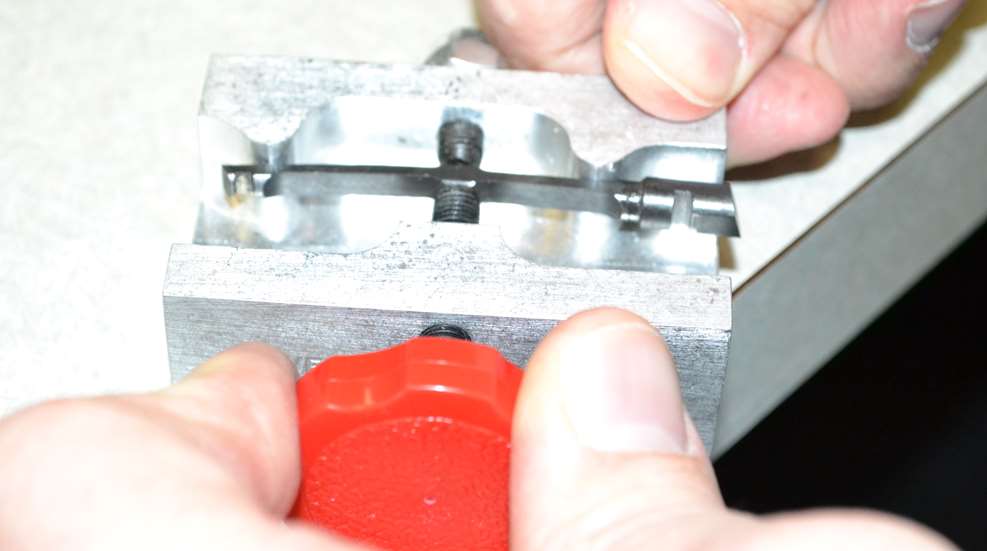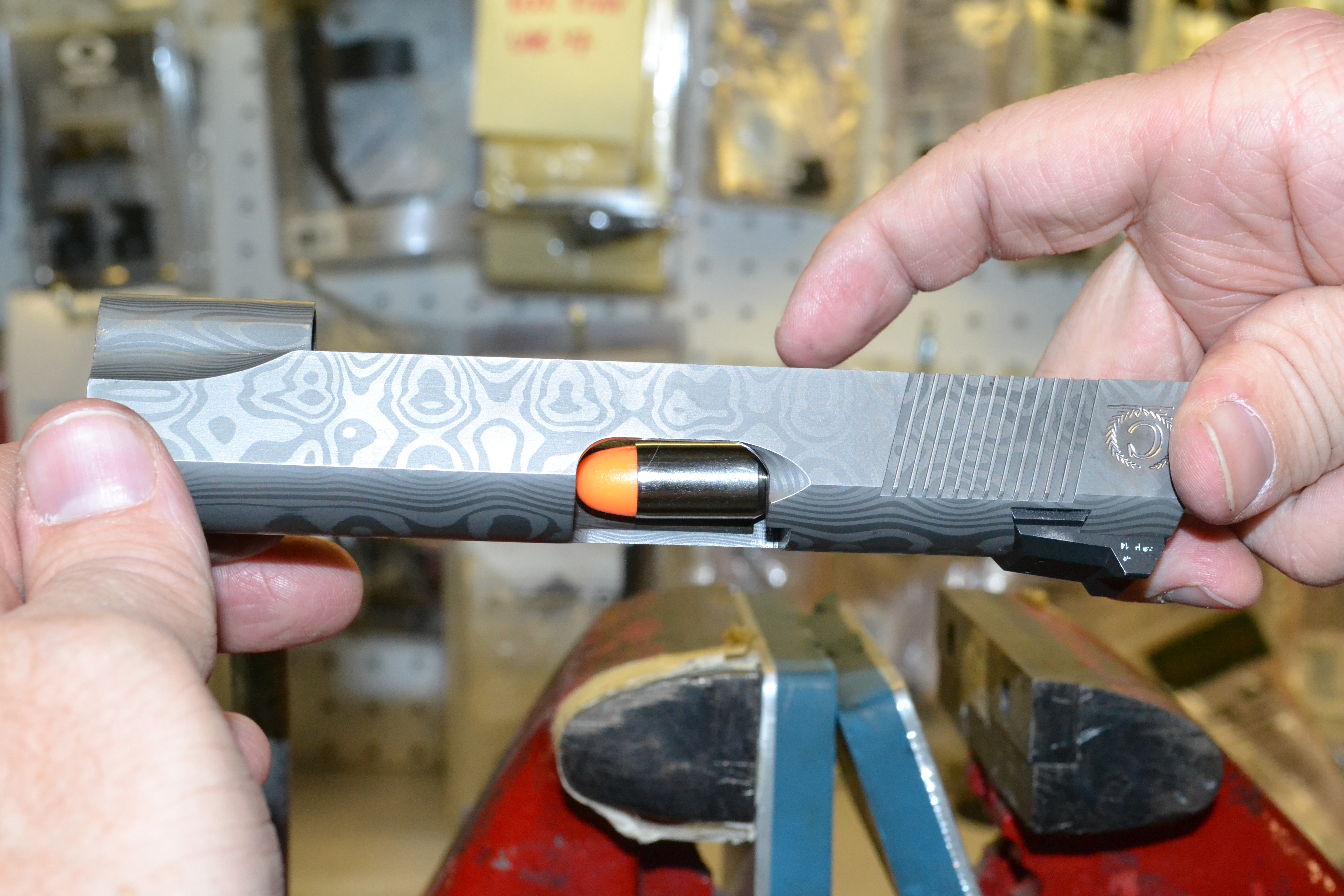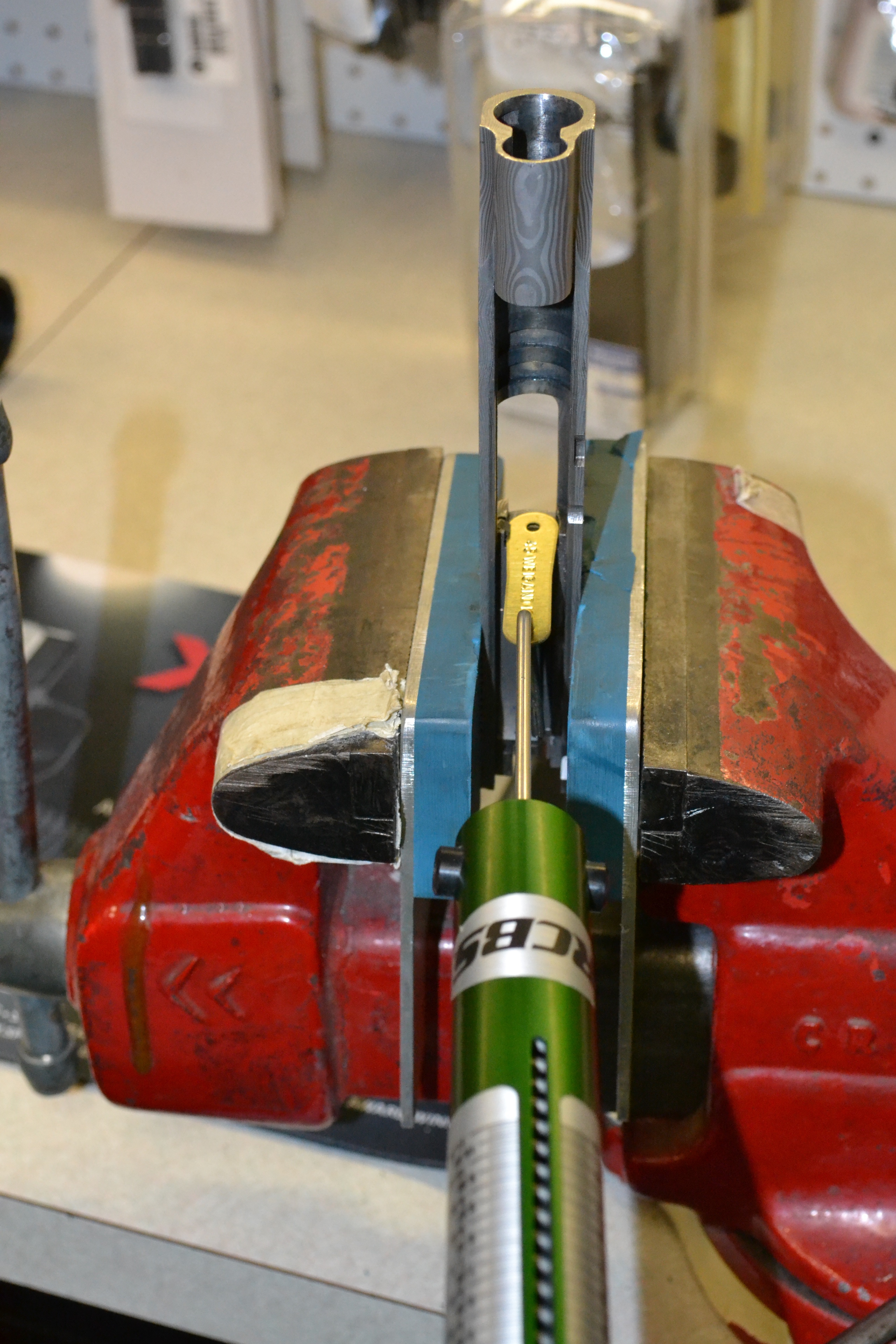
The 1911 operates via a controlled-feed system,” which means extractor tension, or the degree to which the extractor grips the cartridge case greatly influences the pistol’s reliability. Learn, how much is too much and how to adjust it accordingly.
While adjusting an extractor’s tension isn’t difficult, for the pistol to function correctly a balance must be struck. Too little tension and the cartridge will “fall out” of the extractor of the feed cycle or hold the cartridge at such angle as to affect proper chambering. Conversely, too much tension and the force required to squeeze the cartridge between the extractor and the breechface may affect cycling. Therefore, you need to evaluate and, if necessary, adjust extractor tension for foster reliable feeding. According to Kulick and Oldham’s book there are two methods: A qualitative method, and a quantitative method. The first requires no tools.
Install the extractor in the slide, then install the firing-pin stop to hold the extractor in place. Next, press a dummy cartridge up behind the extractor hook until the cartridge is centered against the breechface. Now, shake the slide. How hard? More than a firm handshake, and less than attempting to move the mercury in a thermometer. When doing so, the cartridge should stay in place. If not, more tension is needed. To increase tension, remove the firing-pin stop and extractor from the slide.
Now, partially replace the extractor about halfway in its channel—hook first with the hook pointing down into the slide’s firing-pin hole. Press downward on the end of the extractor, then reinstall the extractor and firing-pin stop, recheck the tension and repeat as necessary. As I see it, the downside to this method is it requires trial and error, after which the authors claim you get a feel for how much force is required to achieve the desired level of tension.
The quantitative method is for those who believe in having a designated tool for the job. Jack Weigand created a pair of gauges for properly assessing and extractor’s tension, along with a tool for increasing or decreasing tension.
The gauges are for .45 ACP or 9 mm/.38 Super. After selecting the appropriate one, slide the gauge up from below and behind the extractor hook. (The gauge simulates a cartridge-case rim being held in place.) Using a trigger-pull gauge, measure the amount of force required to pull the gauge down and out from behind the extractor. According to Weigand, when extractor tension ranges between 25 to 28 ounces, your 1911 should operate 100 percent from an extraction standpoint. (Watch an informative how-to video here.)
In the next entry, we’ll discuss assembling the remaining slide components.







































